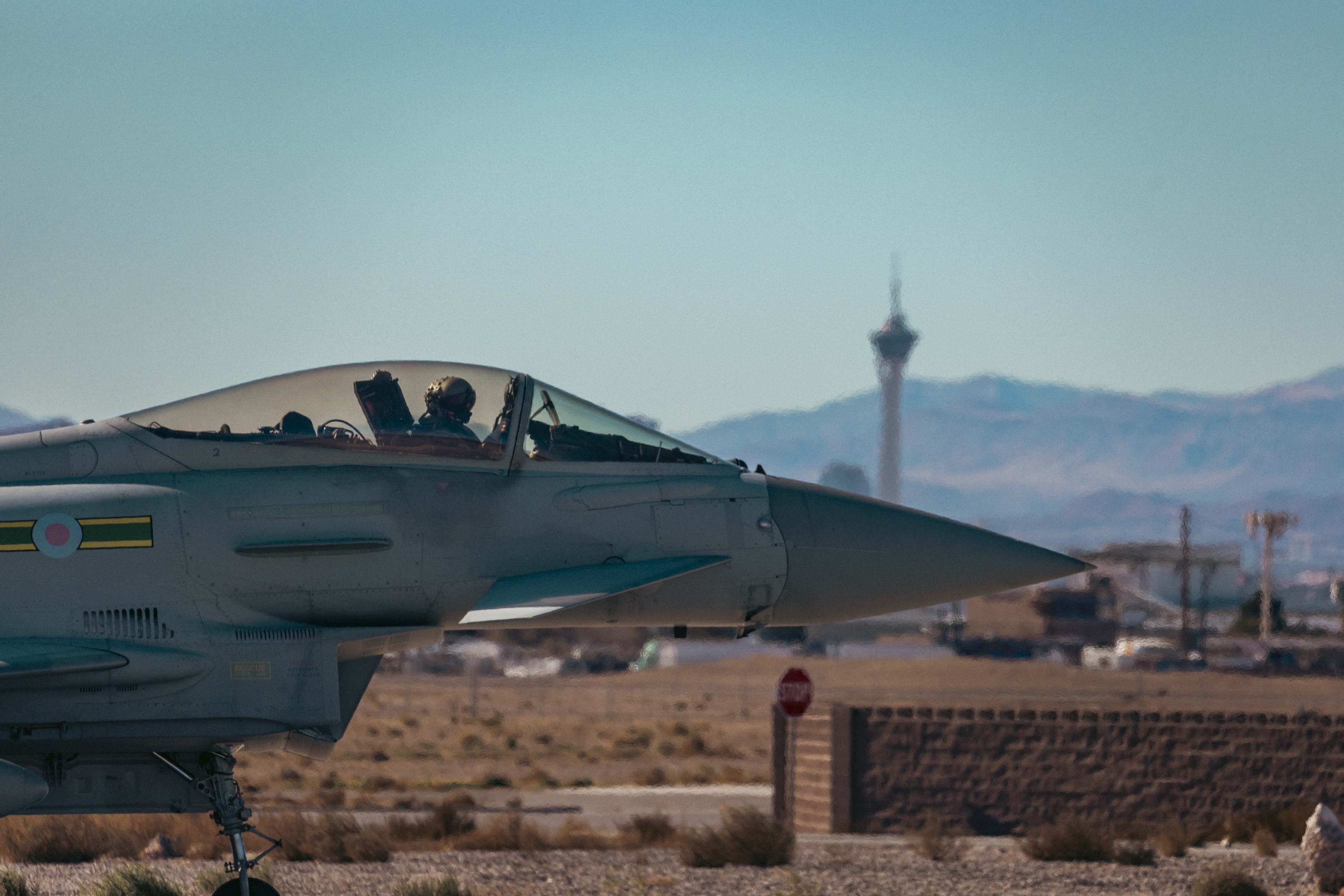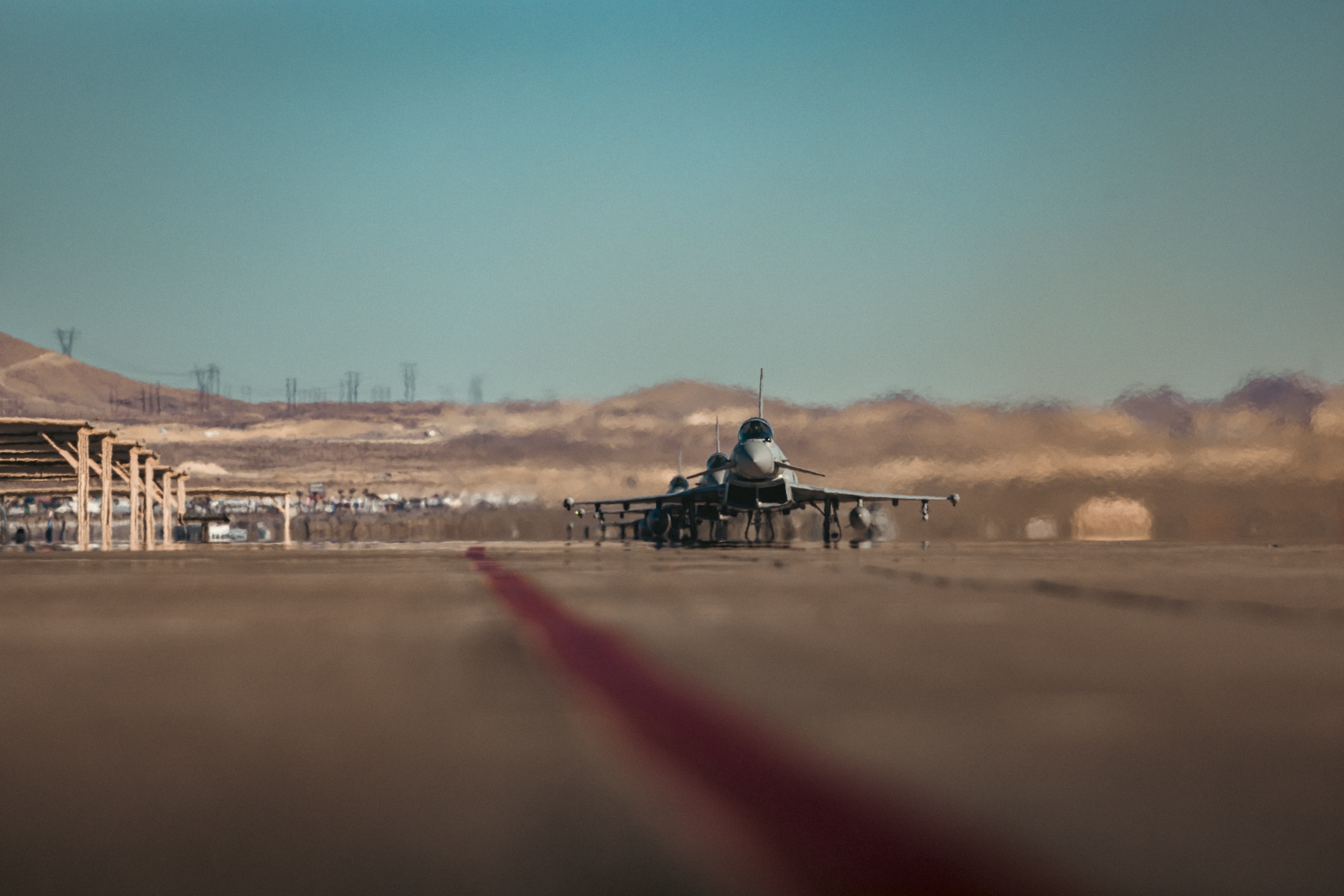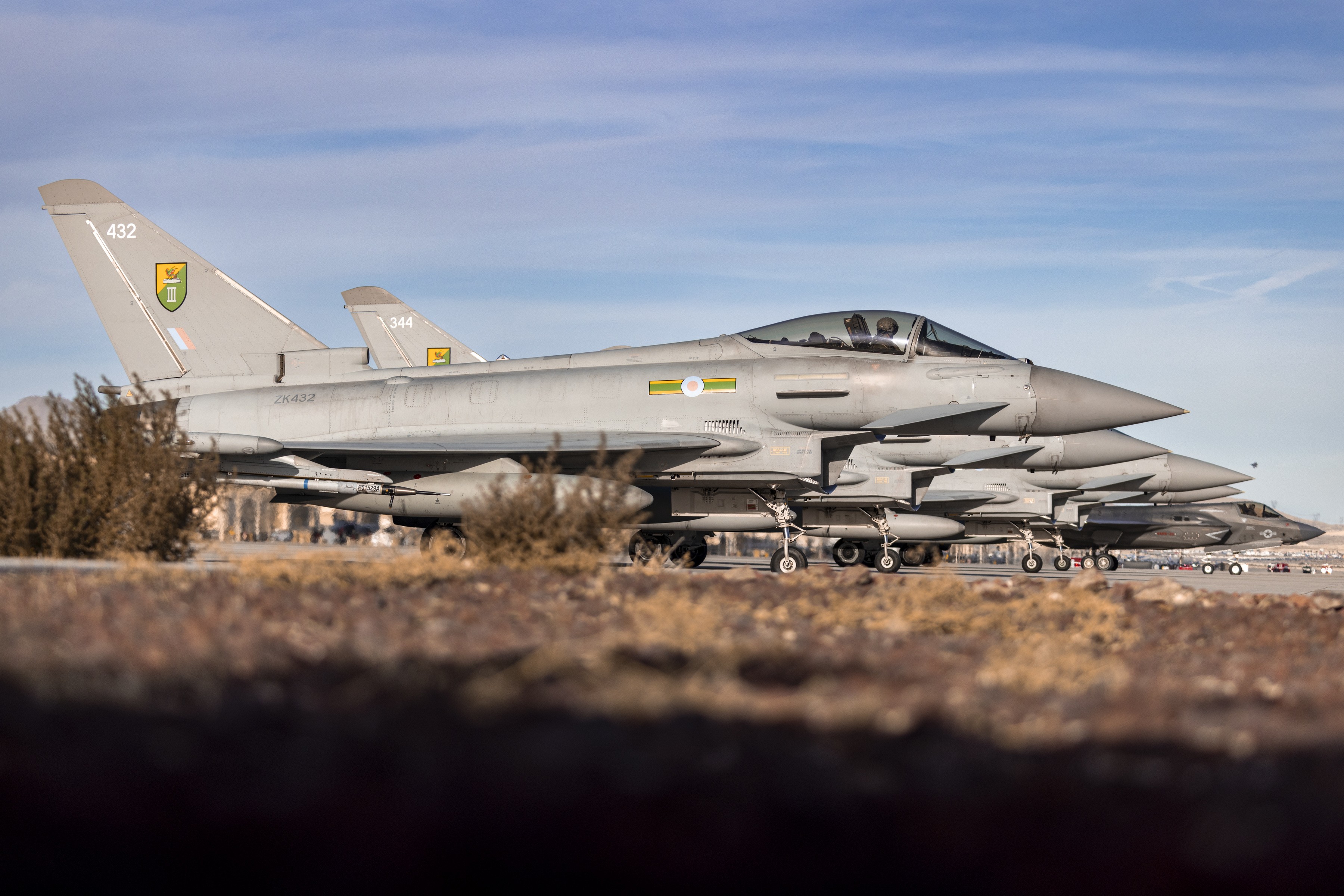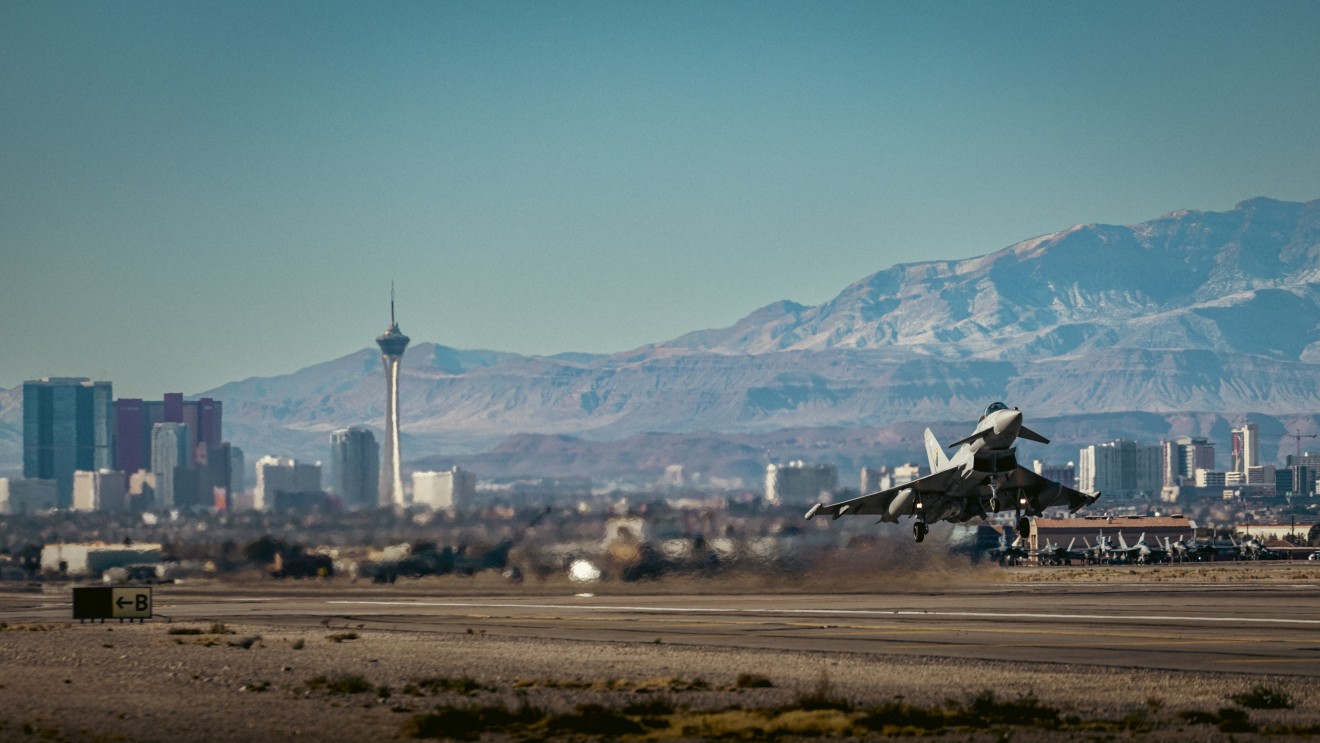We caught up with Tom Raeburn, a 6 Squadron pilot, who was part of the deployment from RAF Lossiemouth, to find out how Typhoon performed and what the key lessons were for the pilots and ground crew.
Can you give us some idea of the scale of Red Flag?
“In terms of the workload, the threats, and the number of aircraft involved, Red Flag is huge. 50-plus aircraft take part in every single mission — with 20 to 30 on the hostile or red side — and the missions take place day and night. In addition, there are multiple tankers supporting the aircraft for refuelling, while there are lots of ISR (Intelligence Surveillance and Reconnaissance) assets involved, like Rivet Joint, Predator and space assets.
“We were consistently operating at almost double what we might see at the climax of even the biggest exercise at home. At Red Flag, it’s a different scale.”
How did Typhoon perform amongst so many different combat aircraft?
“Typhoon was able to carry out a wide range of missions — and very few other players were able to say they’d done all the roles we managed. We did Defensive Counter Air, and Offensive Counter Air (escorting strikers). We performed long-range strikes using Storm Shadow. We also carried out airborne interdiction, using the Litening III targeting pod to find an enemy convoy of trucks and then strike it. We did pre-planned strikes on multiple targets using Paveway IV.
“That’s a vast range of mission sets and I don't think there were many other aircraft in the Red Flag excise that covered the full spectrum.”

It sounds like a demanding pace — how did it cope with such a relentless schedule?
“Yes, it was tough. However, through the two weeks of Red Flag, we flew every sortie assigned to us. That was 10 sorties a day — six daytime ones, four night-time ones. We didn't lose a single sortie due to technical or engineering fault, which is good, even compared to all the US squadrons that are flying out of their sort of home country.”
Eurofighter Typhoon is known for its ability to carry a significant amount and array of weapons. Was this to its advantage during Red Flag?
“Yes, often, we were employed to carry out air-to-surface strikes, either with Storm Shadow or with Paveway IV GPS-guided bombs. We would go in, conduct our strike and then we still had four long-range air-to-air missiles to use afterwards. Then we would move on to a counter-air role. That flexibility was a real strong point for Typhoon.

“It was also good for us to be able to operate with 5th-gen fighters like F-35 because ultimately, in a high-end, air-to-air war we will be working closely together. We're going to bring the missiles to the fight and use their sensors to find targets.”
“The ability to operate closely with another advanced aircraft — one that brings different qualities to the fight — is what an exercise like Red Flag is particularly useful for. It allows pilots and commanders to gain useful experience, hone their skills and gain a detailed understanding of each other’s capabilities.
“Working together correctly we can bring a lot. We have six long-range air-to-air missiles, including Meteor, and can use the other aircraft’s capabilities to find targets for us. Over the two weeks of Red Flag, we could see an improvement in how we set up the formation to work most effectively together. 5th gen aircraft don't carry as many missiles, but they've got great sensors. We needed to be in the right position to be able to pick up those targets and help the formation ingress into enemy airspace.”

What were the key lessons learned from a pilot perspective?
“You learn from one another — about what you can each bring to the fight — that's what Red Flag is really good for. You throw all these different aircraft and aircrew from different backgrounds and experiences together and get everyone working together. Everyone's there to do as well as they can and to learn from it. Red Flag is focused on very high-end missions.
“There is a complex air defence picture and you are striking complex targets on the ground that you've got to find, track and then engage. If you're not all working together on the same page, then you're not going to get anywhere.”

